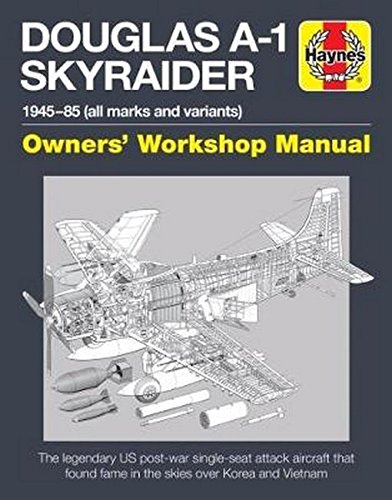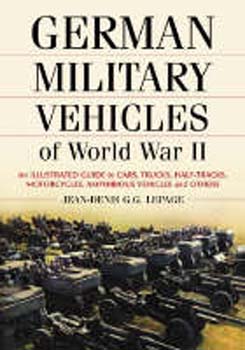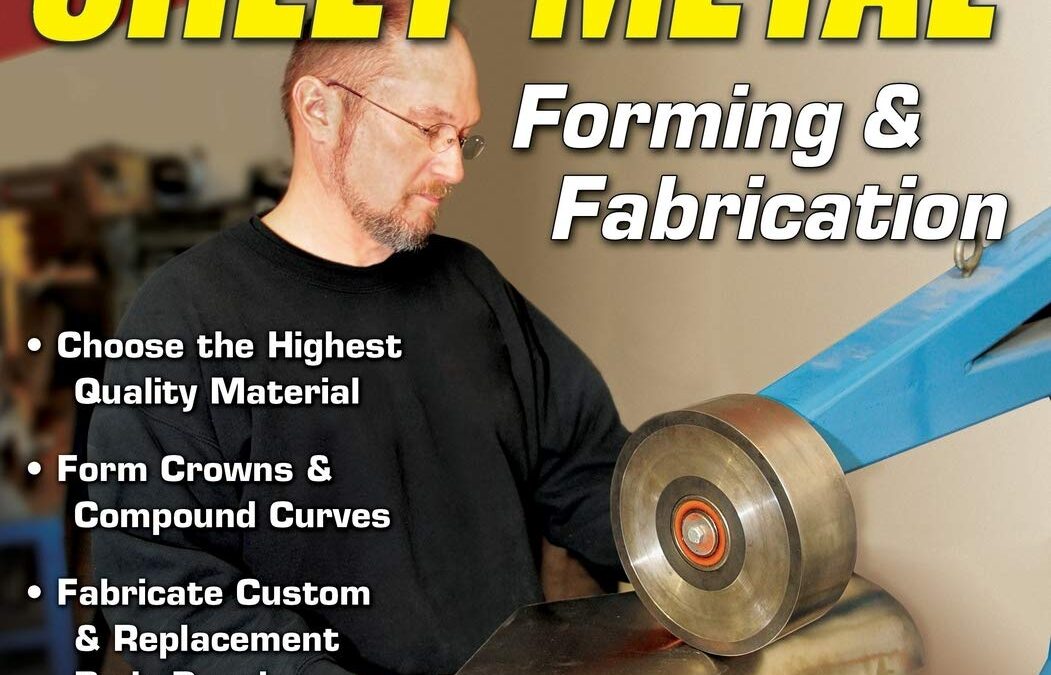
SOLD OUT
The Skyraider became legendary for its ability to soak up battle damage and still keep flying. It was eventually replaced in the US Navy by the swept-wing jet A-6 Intruder and A-7 Corsair. Radar-equipped Skyraiders were operated by the Royal Navy (1951-62) as airborne early warning aircraft, while the French Air Force bought ex-US Navy Skyraiders for use in the Algerian War in the 1960s, and in the 1970s during the civil war in Chad where they were flown by French mercenary pilots.

While World War I introduced the world to modern warfare, it was World War II that saw the onset and use of motorized vehicles in combat. This volume presents a cross-section of the most common transport vehicles produced and used by the German army. Tanks plus auxiliary vehicles such as cars, motorcycles, vans, ambulances, trucks and tractors made it possible for the troops to keep moving. These lightly armored or unarmored vehicles – aka “soft skins” – operated behind the front lines, maintaining supply lines, connecting armies with their home bases, and ultimately determining the outcome of battle. Beginning with the development of military vehicles in the early 1930s, this volume discusses the ways in which this new technology influenced and, to some extent, facilitated Hitler’s program of rearmament. Nomenclature, standard equipment, camouflage and the combat roles of the various vehicles are thoroughly examined. Individual vehicle types are arranged and discussed by the following classifications: cars and motorcycles; trucks and tractors; half-tracks and wheeled combat vehicles. Accompanied by well-researched, detailed line drawings, each section deals with a number of individual vehicles, describing their design, manufacture and specific use.

The Escort RS Cosworth, which started rallying in 1993, was one of the most ingenious designs of all time. What started as a shortened Sierra Cosworth 4×4 platform, topped off by a modified Escort cabin and outer skins, was soon developed into a versatile and sophisticated rally car, and eventually became Ford’s most successful since the legendary Escorts of the 1970s. Because it was smaller, lighter, and more nimble than any of the Sierras, the combination of Cosworth power, four-wheel-drive transmission, and an effective aerodynamic package made it a Rally Giant in all conditions. With five World victories in its first season, and success all around the world in later years, it was seen in every continent, in all conditions. Drivers like Carlos Sainz, Tommi Makinen and Francois Delecour added their own stardust to a glittering reputation. To meet a change in regulations, the Escort World Rally Car took over in 1997, and also enjoyed years of success. Until the all-new Focus WRC was launched in 1999, this generation of Escorts was the most effective rally car that Ford had ever produced.

Sheet metal forming and fabrication is an essential automotive art. Creating door skins, fenders, hoods, and a myriad of other components from sheetmetal is a crucial skill for restoring many muscle cars, building custom parts for hot rods, and fabricating parts for classic or competition cars. While many specialized and expensive tools are used to form sheet metal into a functional and finished part, simple metal working hammers, dollies, anvils, and shot bags can be used to create parts with complex curves and crowns. This book shows the inclined enthusiast how to design and fabricate with inexpensive and simple tools as well as how to fabricate parts using more specialized tools, such as an English wheel.
Automotive Sheet Metal Forming & Fabrication provides the know-how for people who are working, or want to work, along the nearly endless learning curve of this craft. It instructs in most of the common processes and operations in sheet metal fabrication work. These are the basic ones that you can accomplish with some work, and with access to fairly modest tools and equipment. It focuses on how to perform most of the basic operations and tasks used in metal forming and fabrication. Of course, some of the more exotic tools, equipment, and techniques in this field also get attention in this book, but the emphasis is largely on the reliable basics of this work. This volume shows novice metal workers how to apply force and use fine judgment, and through close observation, creativity, ingenuity, and restraint, create almost any metal part.
Wire welders, metal shears and brakes, planishing hammers, and shrinker/stretchers are readily available and affordable, and therefore, metal forming is no longer the exclusive art of professional craftsmen. In turn, simple to more complex fabrication and metal forming tasks are within the reach of adept enthusiasts, and this book comprehensively explains how to accomplish these fun and satisfying tasks. Enthusiasts are shown how to work steel, aluminum, and some other metals, and how to select a metal for a particular part fabrication. This book also discusses how to determine elastic limits as well as how to shrink and expand metal, heating and annealing, and may other metal working techniques.
The photos in this edition are black and white.

An estimated 4.1 million people in the United States participate in recreational sailing. Yet the large library of sailing literature leaves many of them high and dry. On one side are technical guides for America’s Cup boat-builders; on the other, simplistic books for weekend sailors with little interest in science. In Float Your Boat! professional and amateur boaters alike will find intelligent and understandable answers to such questions as: What were the key innovations that made sailboats more efficient? How do you increase the speed of a boat? How do sailboats travel into the wind? Why are so many explanations of sailing so wrong?
Sailing enthusiast and physicist Mark Denny first traces the evolution of the sailing craft, from prehistoric coracles made of animal skins and antlers to the sailboat’s reinvention as a pleasure craft during the Industrial Revolution. He then identifies specific sailing phenomena―how wind drives modern Bermuda sloops, how torque determines stability, why hull speed exists―and provides the key physics principles behind them.
Whether you are an inquisitive landlubber who has never set foot in a boat, a casual weekend sailor, or an old salt who lives for the sea, Float Your Boat! is an accessible guide to the physics of sailing.







